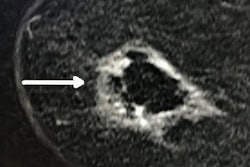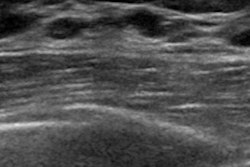
Spanish-speaking women aren't getting the information they need when it comes to breast density notifications -- which more often than not are in English, according to a study published October 22 in the Journal of General Internal Medicine.
Researchers from Boston University School of Medicine found that Spanish speakers who receive information in English about their breast tissue density were unclear about what the notification meant for them. They also misunderstood key concepts in the notifications.
"Legislation requiring mammography facilities to notify women if they have dense breast tissue found on mammography has been enacted in 34 states," wrote a team led by Christine Gunn, PhD. "The impact of dense breast notifications on women with limited English proficiency is unknown ... [but we found that] not having previous knowledge of breast density and receiving notifications in English contributed to confusion about its meaning and inaccurate interpretations of key messages by Spanish-speakers."
Gunn and colleagues explored Spanish-speaking women's experience receiving dense breast notifications by having a Spanish-speaking research assistant interview 19 women by telephone between January and September 2016. The women were between the ages of 40 and 74, had undergone screening mammography with normal results, and had received notification of dense breast tissue. The interviews were recorded and transcribed.
The group analyzed the content of each interview to identify the women's perceptions and actions related to receiving the notification. Of the 19 women interviewed, nine reported not receiving the notification in their native language, and 79% had never heard of dense breast tissue until they received the letter.
Four themes emerged from the interviews:
- The fact that most women had never heard of breast tissue density contributed to their confusion in response to the notification.
- Women misinterpreted information delivered in the notification, such as assuming having dense tissue meant their breasts were "not normal." They had difficulty reconciling the fact that while dense tissue is not unusual, it is also associated with increased breast cancer risk and the reduction of screening mammography's sensitivity.
- Women took additional action to try to understand the notification information, including searching the internet or talking to friends or medical providers.
- Women assumed that the fact that they had received breast density notification meant that their doctors would initiate follow-up for further imaging or office visits.
The study results demonstrate that there's more work to be done to ensure that breast density notification is helpful, Gunn and colleagues noted. Although Spanish-speaking women who received notification of having dense breast tissue acknowledged the importance of the information, this increased awareness was reduced by their misperceptions about the meaning of breast density, its effect on health, and language-related barriers.
"I hope this study highlights the challenges of implementing laws that require very specific medical communications, especially for groups that may be more vulnerable to systems designed for majority populations," Gunn said in a university statement.



















